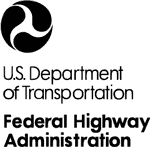U.S. Department of Transportation
Federal Highway Administration
1200 New Jersey Avenue, SE
Washington, DC 20590
202-366-4000
Federal Highway Administration Research and Technology
Coordinating, Developing, and Delivering Highway Transportation Innovations
| FACT SHEET |
| This fact sheet is an archived publication and may contain dated technical, contact, and link information |
| Publication Number: FHWA-HRT-10-021 Date: December 2009 |
Publication Number: FHWA-HRT-10-021 Date: December 2009 |
PDF files can be viewed with the Acrobat® Reader®
|
Over the past 100 years, there has been a steady progression of innovations that enhance the driving experience, in particular the continuing trend toward automating more driving tasks. "Human Factors for Limited–Ability Autonomous Driving Systems," an Exploratory Advanced Research (EAR) Program project, aims to investigate driver engagement through the development of limited–ability autonomous driving systems. Part of the Federal Highway Administration's (FHWA) long–term strategy in understanding autonomous systems, the 3–year study is being conducted by General Motors Corporation and Delphi Corporation (Delphi Electronics and Safety and Delphi Steering). |
In–vehicle innovations have steadily evolved to supplement the driver's ability during normal driving and to augment the driver's ability to respond to critical situations. Early innovations used during normal driving include the automatic transmission, cruise control, and power steering. More recently, adaptive cruise control has been introduced in this category. Early innovations used in critical situations include power steering and brakes, with later additions including antilock brakes, traction control systems, and stability enhancement systems. Most recently, some manufacturers in Asia and Europe already have introduced collision–mitigation braking systems and lane–keeping systems. New features, such as a lane–centering system that also controls steering, indicate that it will not be long before vehicles are on the market that can move autonomously for substantial distances toward a destination with limited driver input.
This EAR project addresses a critical technology and knowledge gap that limits the near–term availability of vehicles able to control their own speed and steering for substantial distances on public roads. This gap exists in how to help drivers maintain adequate situation awareness so that they are prepared to intervene when traffic conditions require. With this in mind, two next–generation driver–assistance technologies that provide longitudinal and lateral control automation, smart adaptive cruise control and lane centering, will be used in human factor studies and experiments in simulators, on test tracks, and on public roads. These trials will address concerns raised by previous research, regarding the need to carefully design autonomous driving systems to avoid potential adverse effects from driver inattention, when they are made available to the general public.
Despite the many benefits expected from automated driving, researchers expect some problems during initial deployment, such as that drivers may become over–reliant on automated systems, or evoke the systems in situations beyond their design parameters. For avionics and other safety–critical automation systems, maintaining adequate situation awareness has been identified as one of the most effective strategies for minimizing response time and improving accuracy when human intervention is required. This project will therefore develop and test strategies intended to help drivers maintain adequate situation awareness when operating vehicles that have limitedability autonomous driving capability.
"The introduction of autonomous driving systems is a major focus area for us because it would bring so many benefits to the road," says Dr. Kunik Lee at FHWA. "In particular, it would reduce congestion by smoothing the flow of traffic as well as reducing the number of accidents and the severity of those accidents that do occur." Lee continues, "Technologies developed to improve driver situation awareness will also have relevance beyond limited–ability autonomous driving and can be applied to most automated systems intended to reduce the work of the driving task." This EAR project aims to take the lead in research to increase understanding of the human–machine interactions necessary for the safety of limited–ability autonomous driving systems and will ultimately help the transportation community understand how future systems and drivers should share driving tasks.
This EAR project is expected to address the following about automated systems:
For more information on this EAR Program project, contact Dr. Kunik Lee at FHWA, 202-493-3491 (email: kunik.lee@dot.gov).
What Is the Exploratory Advanced Research Program?FHWA's Exploratory Advanced Research (EAR) Program focuses on long–term, high–risk research with a high payoff potential. The program addresses underlying gaps faced by applied highway research programs, anticipates emerging issues with national implications, and reflects broad transportation industry goals and objectives. To learn more about the EAR Program, visit the Exploratory Advanced Research Web site at www.fhwa.dot.gov/advancedresearch. The site features information on research solicitations, updates on ongoing research, links to published materials, summaries of past EAR Program events, and details on upcoming events. For additional information, contact David Kuehn at FHWA, 202–493–3414 (email: david.kuehn@fhwa.dot.gov), or Terry Halkyard at FHWA, 202–493–3467 (email: terry.halkyard@fhwa.dot.gov). |

